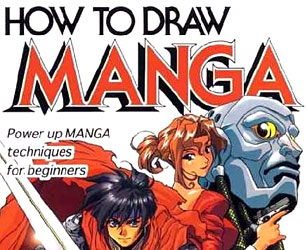
For the millions of American artists-in-training, there's no need to travel to Japan to learn the techniques of manga (the Japanese word for comic book). Japanese publisher Graphic-Sha brings the masters of the art form to the U.S. through its acclaimed, bestselling line of How to Draw Manga instructional books. Since its translation into English, the line has been an unconditional hit in the West, with sales topping one million units sold in the English language editions. The Graphic-Sha line, comprised of more than 40 separate volumes, each detailing specific aspects of the art form, is the original and best selling manga instructional series, with new volumes released throughout the year. The How to Draw Manga books are available in the U.S. exclusively through Diamond Comic Distributors.
"We've been actively involved in importing Japanese comics, toys and graphic novels for years," said Bill Schanes, Vice President of Purchasing for Diamond. "We especially look for areas where cross-pollination makes sense, and in the case of the How to Draw Manga series, there's no doubt about its success. With manga continuing to take Western markets by storm, the how-to-draw manga segment is particularly strong. Simply put, the Graphic-Sha's books are attracting scores of consumers to the book-shelves."
Japanese pop culture has become the latest American pop culture rage. To a new generation of Americans, Japanese popular art is the true measure of one's coolness, with fans calling themselves otaku (Japanese for fan). Manga has helped set the stage by which Japan now routinely exports billions of dollars worth of its pop culture to the U.S.
Along with the insatiable desire on the part of America's youth to experience Japanese art is an almost-equally insatiable desire to create it. Artistic Americans seek to emulate the styles, storytelling, and artistry of their Japanese idols, leading to a massive demand for books and materials that will teach them how to do just that. The How to Draw Manga line meets that need, and its enormous popularity has propelled the books off of shelves and into sales history.
The manga trend has built over decades, with Japanese animation and comic books filtering into U.S. markets as early as the 1970s. The floodgates broke wide open in the 1990s and the tidal wave shows no signs of stopping. In 2002 Japanese animation exports accounted for more than three times its export revenue from steel. Unlike some publishing trends, this one shows no signs of slowing," added Schanes. "Thanks to its measured build-up over many years, its appeal to both genders, Japanese pop culture in general and manga in particular has become an integrated part of American pop culture. Interest in this art form will only increase, as will its potential profit."